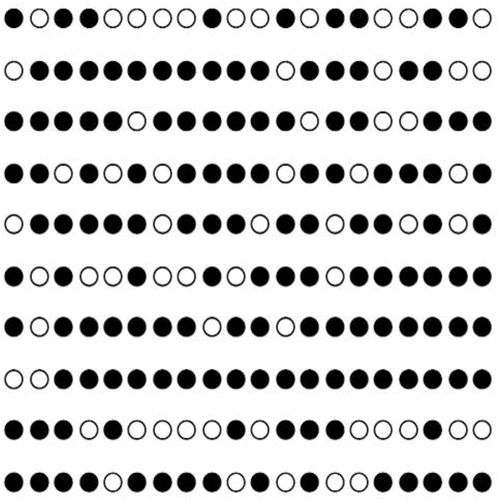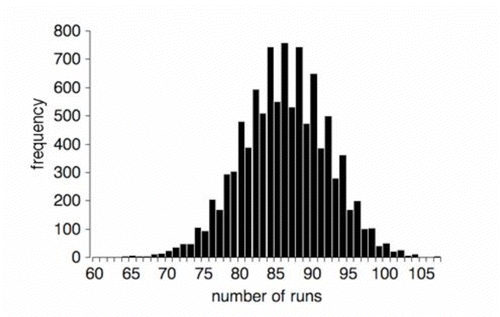Figures & data
Figure 1. Sequence of 200 consecutive basketball free-throws by a single shooter. Black circle = success, open circle = failure. Sequence begins at upper left, and each row is read from left to right.

Figure 2. Frequency distribution of the number of runs, u, obtained by randomly rearranging the data shown in (10,000 replicates).

Table 1. Observed transitions in the series of free-throws shown in .
Table 2. Expected number of transitions under the null hypothesis that each free-throw is an independent event.
Table 3. Outcome of free-throw trials broken into successive blocks of 20 (using data shown in ).
Table 4. Transitions in the simulated series of free-throws shown above.